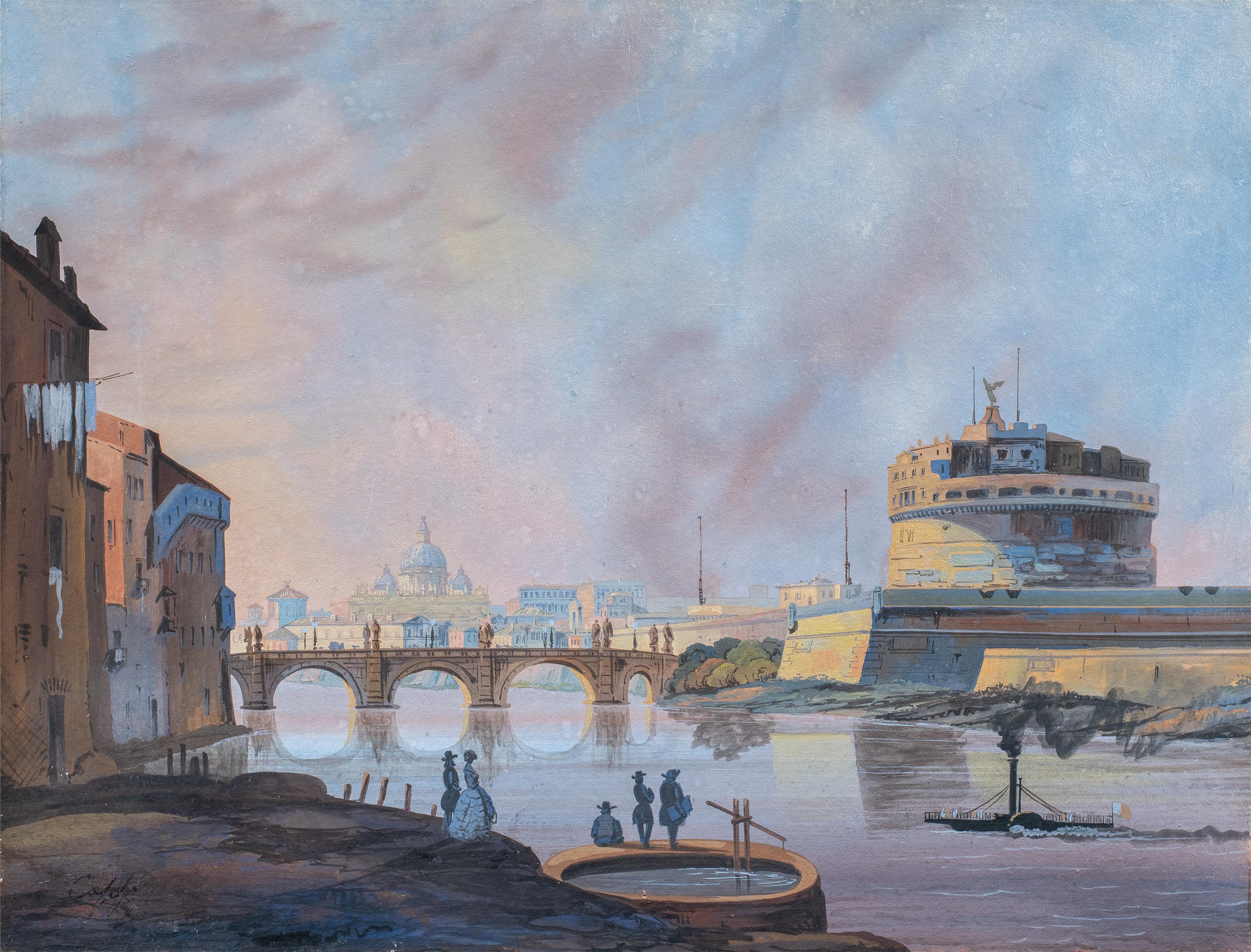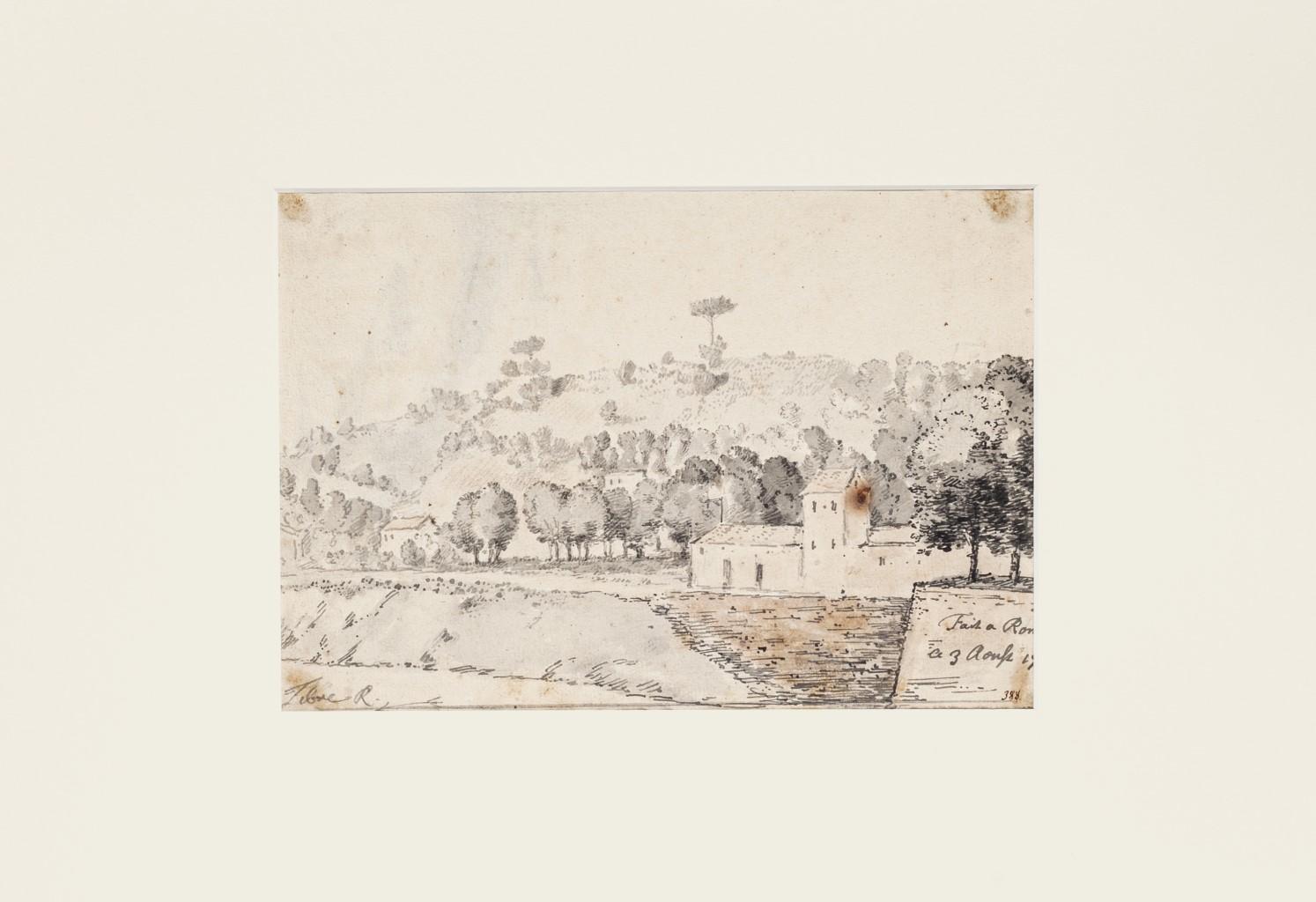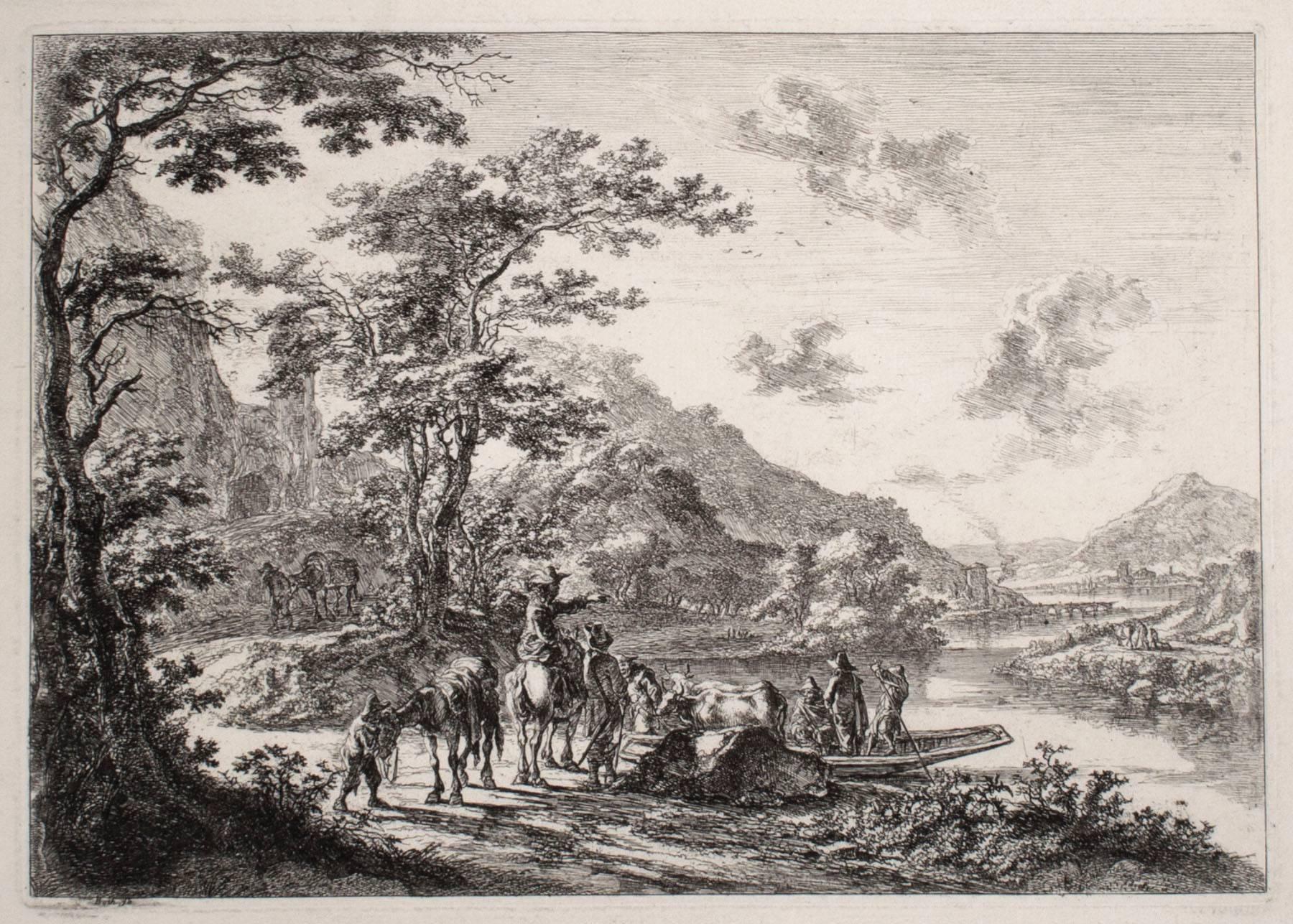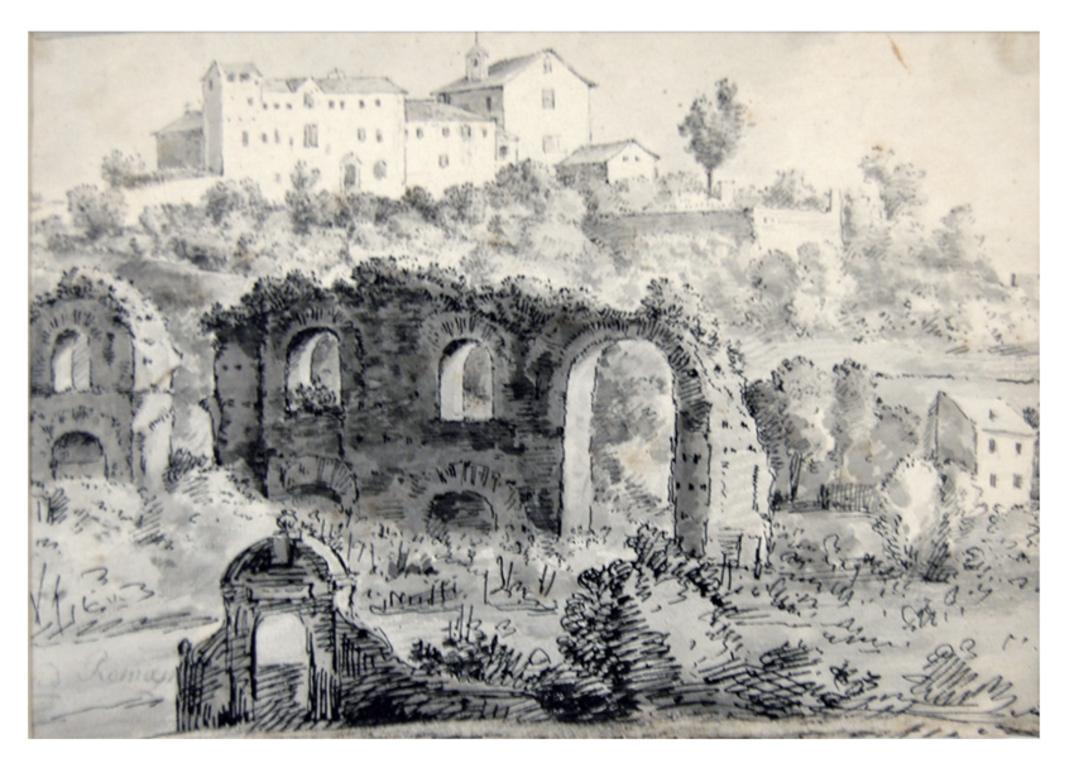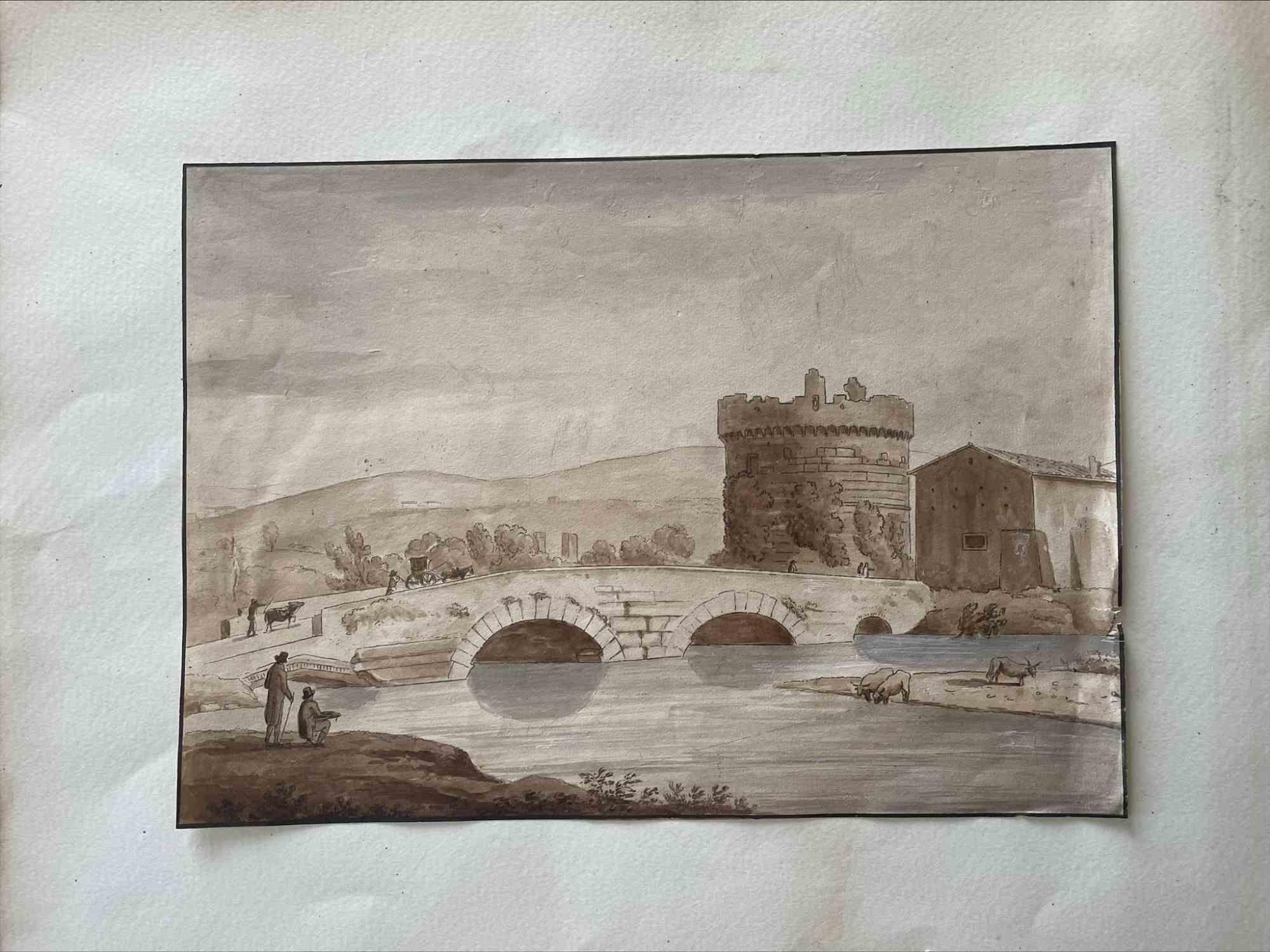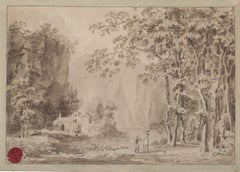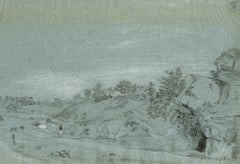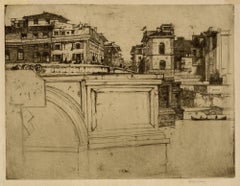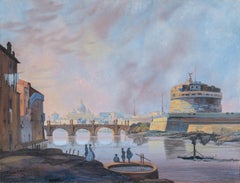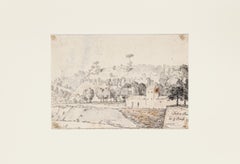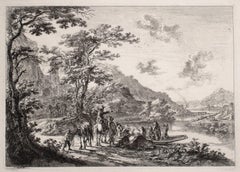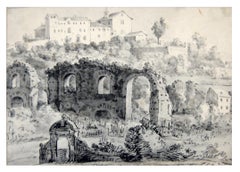Items Similar to The Tiber, near Rome / Italian School 18th Century
Want more images or videos?
Request additional images or videos from the seller
1 of 2
UnknownThe Tiber, near Rome / Italian School 18th Century1750
1750
$2,000
£1,517.55
€1,735.19
CA$2,793.46
A$3,105.94
CHF 1,621.75
MX$37,806.91
NOK 20,692.86
SEK 19,388.22
DKK 12,950.02
Shipping
Retrieving quote...The 1stDibs Promise:
Authenticity Guarantee,
Money-Back Guarantee,
24-Hour Cancellation
About the Item
Pen and sepia ink wash on cream laid paper, 4 1/8 x 6 3/16 inches (103 x 152 mm). In good condition with scattered areas of light brown discoloration, and uniform age tone. Condition consistent with age.
- Creation Year:1750
- Dimensions:Height: 4.13 in (10.5 cm)Width: 6.19 in (15.73 cm)
- Medium:
- Movement & Style:
- Period:
- Condition:
- Gallery Location:Middletown, NY
- Reference Number:Seller: BH5141stDibs: LU1979210871032
About the Seller
5.0
Gold Seller
Premium sellers maintaining a 4.3+ rating and 24-hour response times
Established in 2004
1stDibs seller since 2022
70 sales on 1stDibs
Typical response time: 3 hours
- ShippingRetrieving quote...Shipping from: Middletown, NY
- Return Policy
Authenticity Guarantee
In the unlikely event there’s an issue with an item’s authenticity, contact us within 1 year for a full refund. DetailsMoney-Back Guarantee
If your item is not as described, is damaged in transit, or does not arrive, contact us within 7 days for a full refund. Details24-Hour Cancellation
You have a 24-hour grace period in which to reconsider your purchase, with no questions asked.Vetted Professional Sellers
Our world-class sellers must adhere to strict standards for service and quality, maintaining the integrity of our listings.Price-Match Guarantee
If you find that a seller listed the same item for a lower price elsewhere, we’ll match it.Trusted Global Delivery
Our best-in-class carrier network provides specialized shipping options worldwide, including custom delivery.More From This Seller
View AllLake landscape – Swiss School early 19th century
Located in Middletown, NY
Brush and brown ink and wash with graphite on cream wove paper, 6 1/2 x 9 1/4 inches (165 x 232mm). Inscribed "Fahlerant, No. 9754, Paisaje--Orillas de un lago" in ink on the verso. ...
Category
Early 19th Century Realist Landscape Drawings and Watercolors
Materials
Ink, Handmade Paper, Graphite
Riva San Giuliano
By Edgar Chahine
Located in Middletown, NY
Etching with drypoint on cream laid paper with a deckle edge, 7 7/8 x 13 1/8 inches ( 200 x 334 mm), full margins. Signed and numbered 27/100 in pencil in the lower margin. With two ...
Category
Early 20th Century French School Landscape Prints
Materials
Handmade Paper, Drypoint, Etching
At Tunbridge Well
By Agostino Aglio
Located in Middletown, NY
Black crayon and graphite with white heightening on blue handmade laid paper. Adhered at all four corners to a period support, on which the title and an illegible date (perhaps 1815) appear to be written in the artist's hand.
________
Aglio was born in Cremona is 1777 and his artistic talent was recognized early in his life. He was promised a place at the University in Milan by the Holy Roman Emperor, however, his formal education was upended before it even began by the invasion of Italy and Austria by Napoleon. Aglio joined the war effort and fought in a series of major battles near Venice before becoming seriously ill. At the age of about 23 he was released from duty, and traveled to Rome to focus on his health, and landscape painting. In Rome, Aglio studied with the renowned artist Campovecchio. At the invitation of well known British architect William Wilkins (designer of the National Gallery and University College London), Aglio relocated to London in 1803. He made London his permanent home, and married Letitia Clarke in 1805. He enjoyed a lucrative career painting frescoes in the interiors of high society townhouses, country manors, and major London concert halls and theaters. Most notably, Aglio painted multiple official portraits of Queen Victoria...
Category
Early 19th Century Old Masters Landscape Drawings and Watercolors
Materials
Crayon, Handmade Paper, Laid Paper, Color Pencil, Graphite
Ponte della Trinità, Florence
By David Young Cameron
Located in Middletown, NY
Etching and drypoint on tissue-thin cream laid paper, 6 5/8 x 8 1/8 inches (167 x 205 mm), full margins. Signed in pencil in the lower right margin, and inscribed "Ponte Trinità, Florence" in pencil the lower left margin. Non-archival paper tape tabs at the top right and left corners on the verso, with minor associated discoloration which presents on the recto. Minor, light mat tone, and some very small losses at the extreme corners, well outside of image area. The numerals "325" written in pencil in the lower right margin, in reference to the Rinder catalog number. A beautiful, silvery, early-state impression.
Rinder 325
[Rinder 325 iii/vii].
The son of a clergyman, Sir David Young Cameron was born in Glasgow in 1865. After a brief and unhappy dalliance in the fields of business and law, Cameron began attending the prestigious Glasgow School of the Arts in 1881, and later the Edinburgh School of the Arts. At first associated with the Glasgow Boys (John Lavery, Joseph Crawhall...
Category
Early 20th Century Modern Landscape Prints
Materials
Laid Paper, Drypoint, Etching
From the Ponte Vecchio, Florence
By John Taylor Arms
Located in Middletown, NY
Etching and aquatint on hand made F.J. Head & Co watermarked cream laid paper, full margins. Signed and dated in pencil, lower right margin. From the edition of 160 (from a total of ...
Category
1920s American Modern Landscape Prints
Materials
Handmade Paper, Laid Paper, Etching, Aquatint
Mountain landscape with an aqueduct and dam - FRENCH SCHOOL
Located in Middletown, NY
Pencil on smooth cream wove paper with a window pane drawn in gold ink, 8 3/8 x 11 3/4 inches (213 x 298 mm). Signed illegibly and dated in ink and again in pencil within the lower m...
Category
Mid-19th Century French School Landscape Drawings and Watercolors
Materials
Gold
You May Also Like
Follower Ippolito Caffi (Roman school) - 19th century landscape painting - Tiber
By Ippolito Caffi
Located in Varmo, IT
Follower of Ippolito Caffi (Belluno 1809 - Lissa 1866) - Rome, view of the Tiber towards Castel Sant’Angelo.
54 x 69 cm.
Ancient oil painting on paper transferred to canvas, withou...
Category
Late 19th Century Realist Landscape Paintings
Materials
Watercolor, Paper
$2,398 Sale Price
33% Off
Free Shipping
Rome/Tevere - Pencil and Watercolor Drawing - 1741
By Jan Peeter Verdussen
Located in Roma, IT
Rome is a beautiful artwork realized by Jan Peter Verdussen in 1741.
In good condition except for some pencil marks and traces of sealing wax on the back and some diffused foxings.
...
Category
1740s Old Masters Landscape Drawings and Watercolors
Materials
Watercolor, Pencil
View of the Tiber with Country Landscape
By Jan Dirksz Both
Located in Chicago, IL
Etching on paper with Schriftband watermark.
Reference: Bartsch 7 III/IV (from VI).
A very fine, early impression. Printed with the name of the artist, but before the addition...
Category
15th Century and Earlier Old Masters Landscape Prints
Materials
Etching
La Campagne de Rome - Roman Countryside - Drawing by J. P. Verdussen - 1740ca
By Jan Peeter Verdussen
Located in Roma, IT
China ink and watercolour on paper.
Realized in 1740 ca.
Very good conditions.
Includes passepartout.
Category
1740s Old Masters Figurative Drawings and Watercolors
Materials
Ink, Watercolor
Roman Landscape - Drawing - 19th Century
Located in Roma, IT
Roman Landscape is an artwork of the 19th century.
Watercolour on paper. The artwork is attached on passepartout: 27.5 x 34.5 cm.
The evocative representation of a scenic view of t...
Category
19th Century Modern Abstract Drawings and Watercolors
Materials
Paper, Watercolor
Disegno figurativo francese paesaggio italiano neoclassico del XIX secolo
Located in Florence, IT
Il piccolo ma ben definito disegno raffigura una veduta dettagliata del Santuario della Madonna di San Luca, sul colle della guardia a Sud Ovest della città di Bologna.
Può essere a...
Category
Early 19th Century Other Art Style Landscape Drawings and Watercolors
Materials
Paper, Pencil
More Ways To Browse
Paintings Of Rome Italy
Antique Laid Paper
Old Master Italian Drawings
Drawings Italian 18th Century
18th Century Landscape Italy
18th Century Italian Landscape
Old Master Pencil Drawing
Sepia Drawing
18th Century Italian Landscape Painting
18th Century Pen
18th Century Uniform
18th Century Pen And Ink
P Martin Watercolor
Used Drums Boston
Gilbert Spencer
Janusz Kokot
Vintage Holiday Brochures
Welcome Mat
